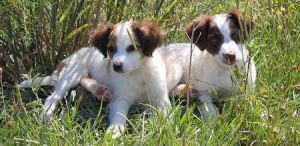Educational Methods

The foundation for natural and species-appropriate dog training is understanding the dog from its natural behavior and gaining its trust. For this it is necessary to learn about and understand the dogs body language and to respect its natural needs.
The dog is a descendant of the wolf and should be seen as such, perhaps simply as our "little wolf".
Modern training methods firmly distance themselves from violence and the use of pain or submission. On the contrary, modern dog training is based on the latest findings of behavioral research, via recognition in form of praise and reward to motivate the dog to follow the signals of its master and to enable both a common harmonious life. This requires a loving integration of the dog as a member of the family, with security and in compliance with clear, understandable rules.
A dog can only be a best friend if its master recognizes it as a highly social creature and treats it like her/his best friend.
Modern dog training begins at puppy age, by qualified dog therapists, in individual or group training sessions. In group training, it is important to socialize the dog among conspecifics and people, as well as to learn signals and to comprehend them through regular repetition. An individual training serves to coordinate the human-dog-team in an even more intensive way individually and trustfully.
It is not in the nature of a dog to live together with humans. For this reason, dog training serves on the one hand the "socialization" into a human world, and on the other hand, in the shape of obedience, the dog's safety from man-made dangers. The basic training includes the basic signals "Here", "No", "Sit" and "Heel" as well as walking on a loose leash. Depending on the dog's individual behavior and training level, anti-chase lessons, recall training, city and high traffic training, and mental occupation training provides further assistance.
Nadine Wagner-Stuckart